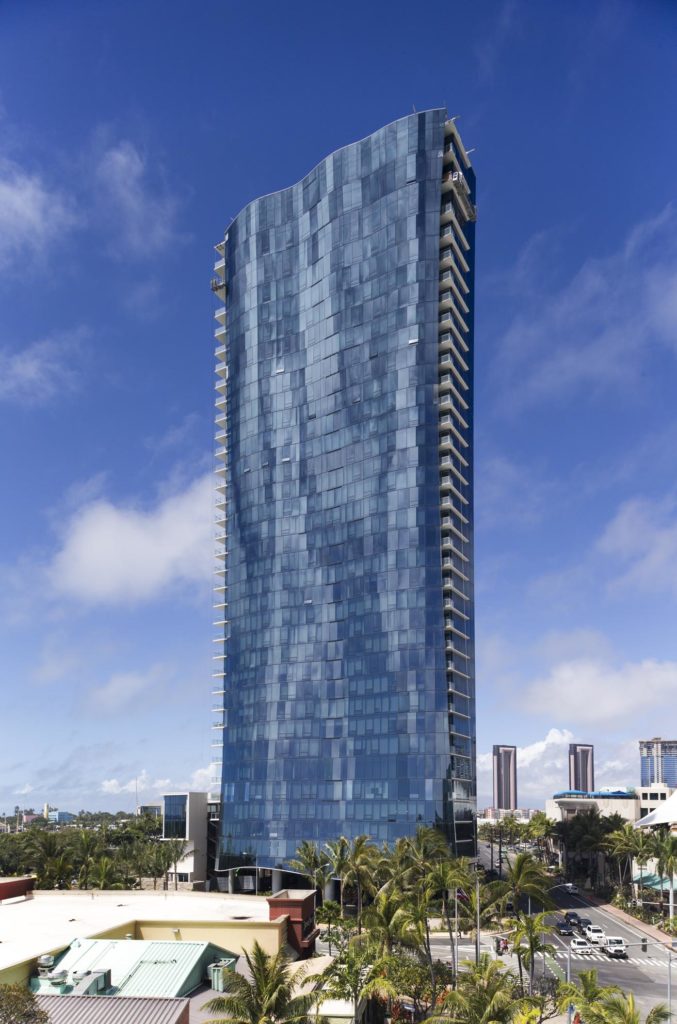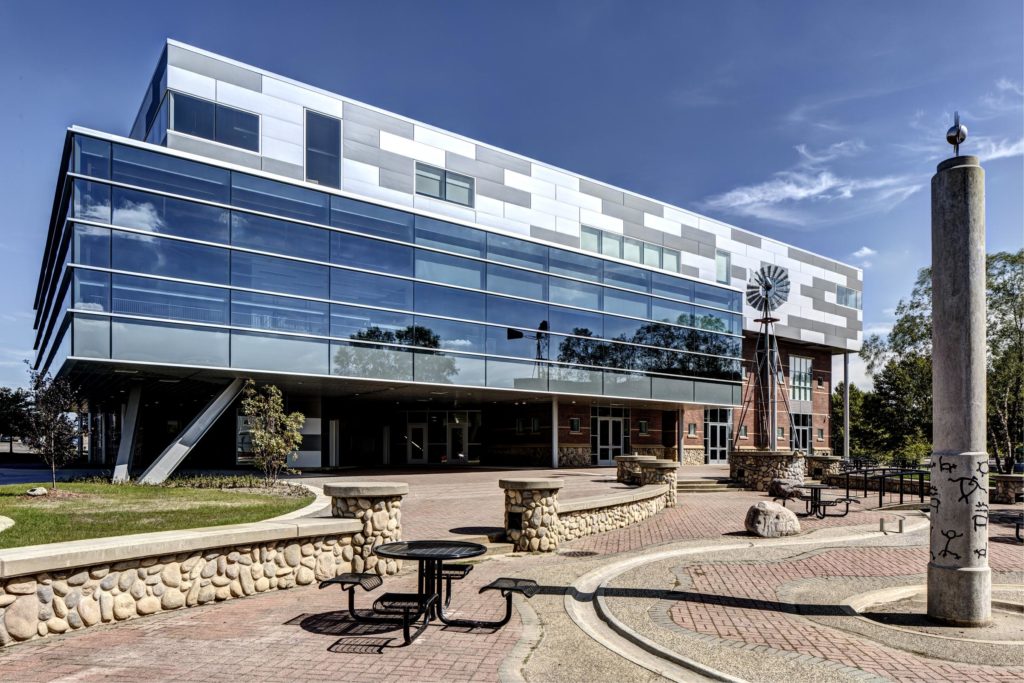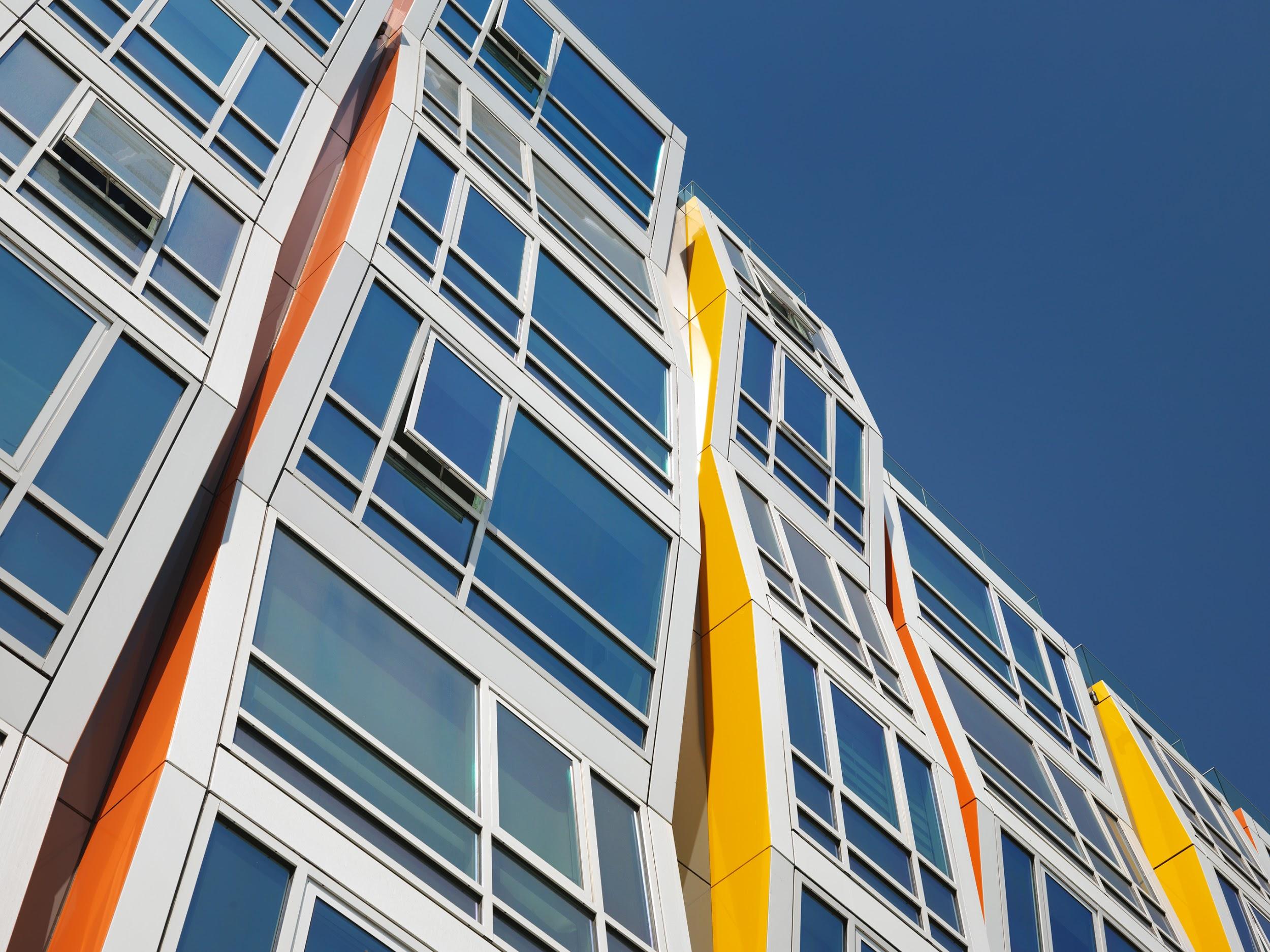Glass façades can present something of a dilemma for performance-minded architects. On one hand, they let natural daylight in, which is proven to improve mood and performance of education and work tasks* while also cutting down on the demand for artificial lighting; on the other hand, if not designed properly, they can let in solar heat, leading to occupant discomfort and taxing air conditioning systems. It can be challenging to find the right balance.
Fortunately, SunGuard® SNR 43 coated glass from Guardian Glass offers the best of both worlds. Using this high-performance coating, the glass transmits daylight while helping to manage solar heat and maintaining an attractive and neutral appearance. Brian Schulz, product manager, Guardian Glass, explains: “High performance low-E Guardian SunGuard® SNR 43 coated glass was developed to help architects meet or exceed stringent energy codes and earn LEED® credits without compromising their building design objectives.”
Glass low-E coatings are made from microscopically thin layers of metal oxides on the glass surface. Multiple layers can be applied to modify a variety of properties, including transparency, reflection, color, thermal and solar performance and long-term durability. Low-E coatings reflect long-wave infrared radiation, which is what transmits heat. Infrared radiation is invisible, so low-E glass is able to stay transparent while keeping interiors cool.
SunGuard® SNR 43 coating can be applied to the surface of many different types of glass. Guardian Glass manufactures its glass using the float process, where molten glass is spread over a bath of liquid tin. This creates extremely smooth, flat sheets that are carefully cooled to give the glass the proper strength and clarity. These sheets are then coated with low-E coatings and then cut into the final size by the manufacturer or glass fabricator. Glass may undergo further processing, such as heat-treating, laminating and insulating.
The coating process begins with a thorough cleaning of the glass surface. The glass lites are then transported into a vacuum coater using a magnetron sputter vacuum deposition (MSVD) coating process. The MSVD process creates sputter coatings, which offers more color, solar, thermal and light-to-solar gain options than other processes.
The MSVD process works by bombarding a metal target with charged ions in the presence of the glass. The metal target releases atoms as a result of the bombardment, and these metal atoms deposit on the surface of the glass. Multiple coatings can be applied to the same sheet of glass, resulting in a modified material with enhanced properties.

Waiea tower; photo by Marco Garcia
SunGuard® SNR 43 coating specializes in letting in light, but not heat, from the sun. SunGuard® SNR 43 coating on clear glass has a visible light transmission of 43 percent, a light-to-solar gain of 1.89 and blocks 77 percent of solar heat transfer, all of which makes it a highly efficient conduit for natural light. The material has a solar heat gain coefficient of .23, lower than the façade solar heat gain requirement of ≤.25 in warmer climates.
The coated glass has a low U-factor, which means it has a better insulating ability than uncoated glass. Guardian SunGuard Advanced Architectural Glass can help contribute up to 20 total points in four of the six LEED® categories.

Battle Creek Area Mathematics and Science Center (BCAMSC); photo courtesy of TowerPinkster Architects
Guardian SunGuard® SNR 43 coating on CrystalGray® glass was used by TowerPinkster Architects for the Battle Creek Area Mathematics and Science Center (BCAMSC). This glass makeup has a 31 percent visible light transmission and ultra-low 0.20 solar heat gain coefficient, which made it an ideal choice for bringing daylight into classrooms and education spaces. For the rest of the building, TowerPinkster used Guardian SunGuard SuperNeutral® 68 coated glass, which has a 68 percent visible light transmission and a solar heat gain coefficient of 0.38.
“Guardian SunGuard® coated glass played an important role in helping us achieve our design goals for the Battle Creek Area Math and Science Center,” said Matt Slagle, Director of K12 Education, who is also on the Board of Directors at TowerPinkster. “The neutral appearance of the glass allows for the seamless transition from its original facility, the former Cereal City USA Museum, to a state-of-the-art energy-efficient facility that provides abundant natural light.”
Guardian SunGuard® SNR 43 coated glass offers an improved way for architects to use glass façades to bring in light without taking on the sun’s excess heat. Available on a variety of glass types, it works well in window and spandrel panels and reliably mimics the transparency and appearance of uncoated glass.
The SunGuard® coated glass product line from Guardian Glass offers excellent solar control and a wide variety of colors and performance levels. SunGuard glass products provide innovative, leading solutions for appearance, economics and energy efficiency, and are available through an international network of independent Guardian Select® fabricators. For more information about SunGuard, visit guardianglass.com.
Top image: 2558 Mission – Vida; photo by Rien Van Rijthoven









